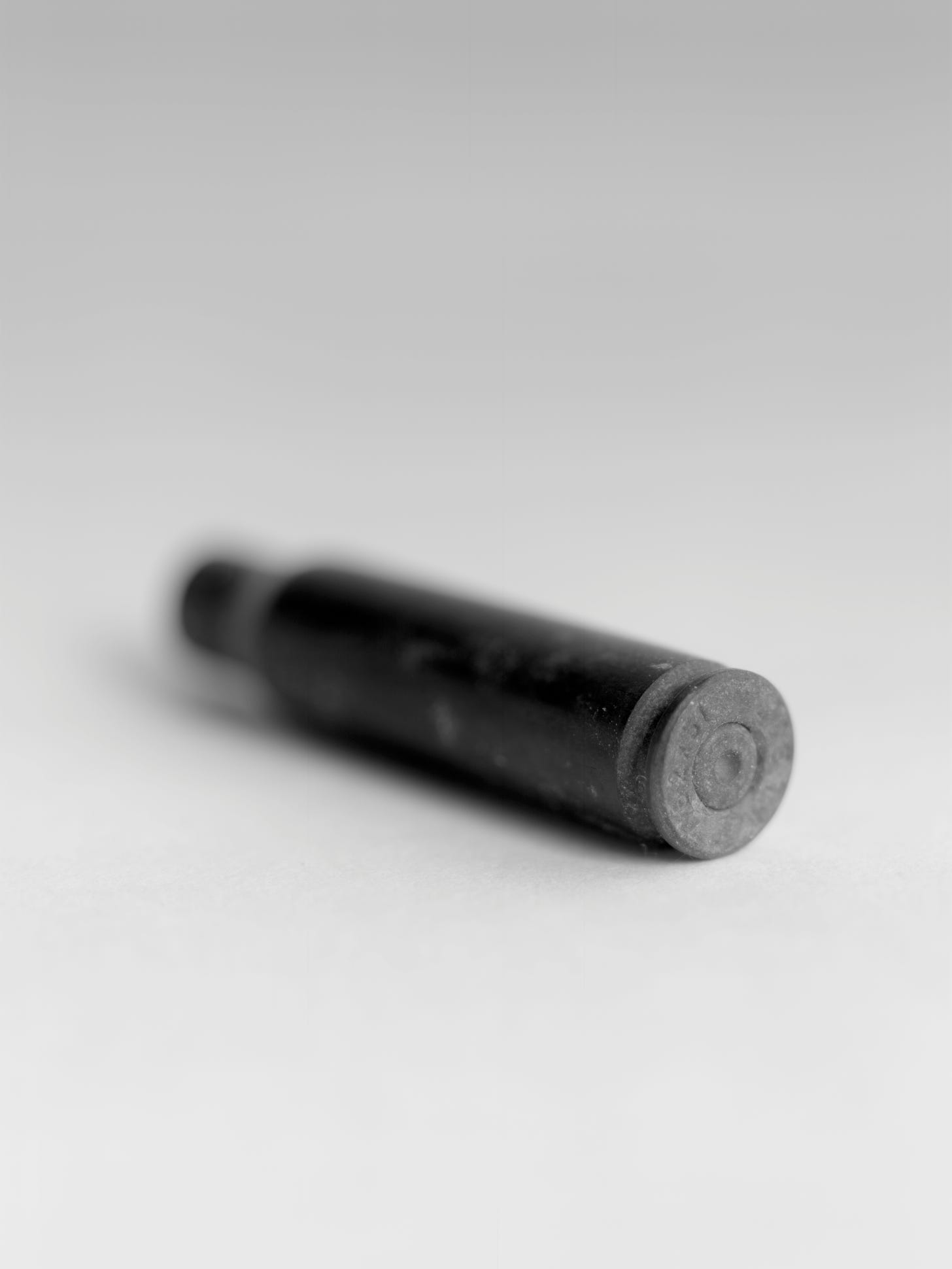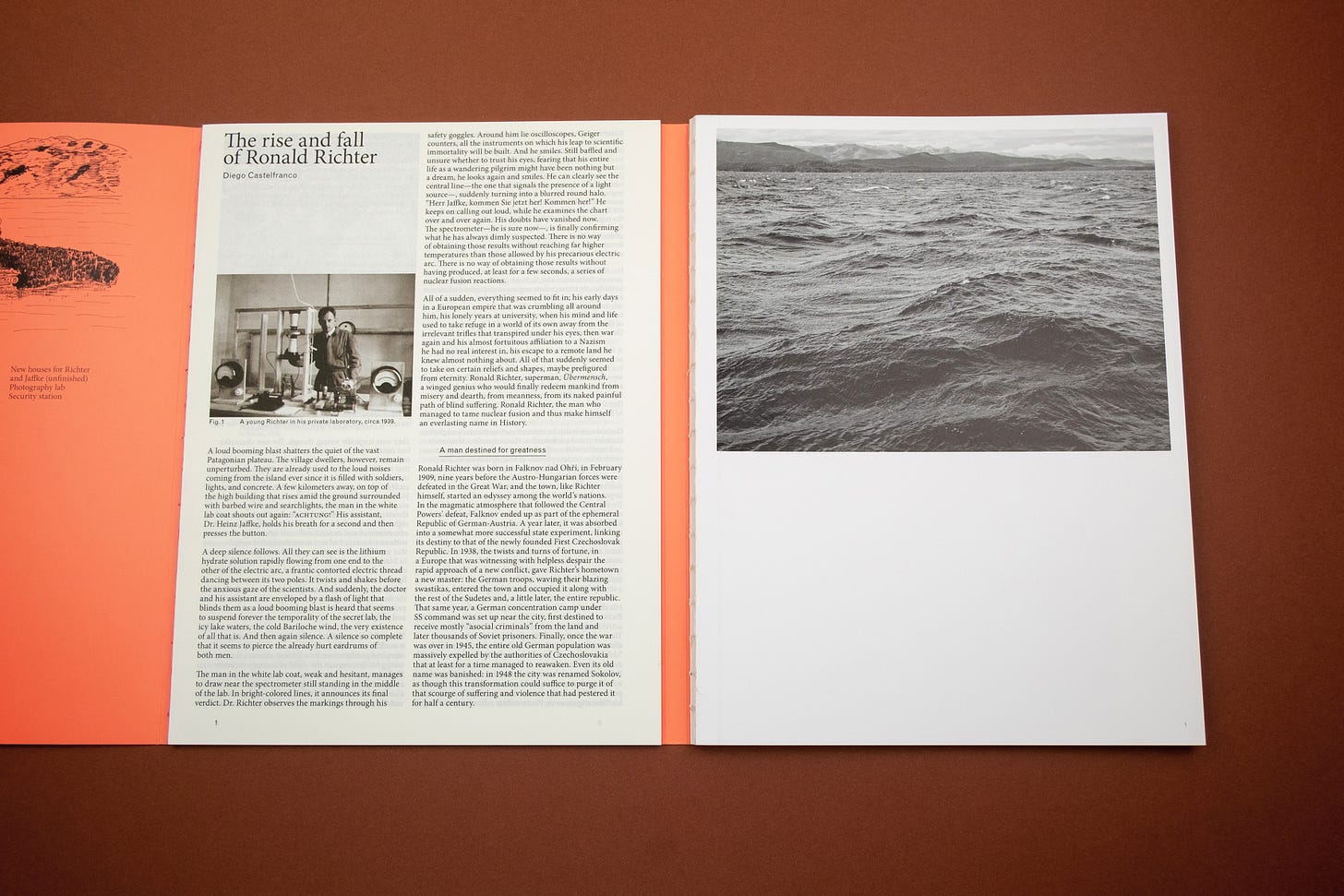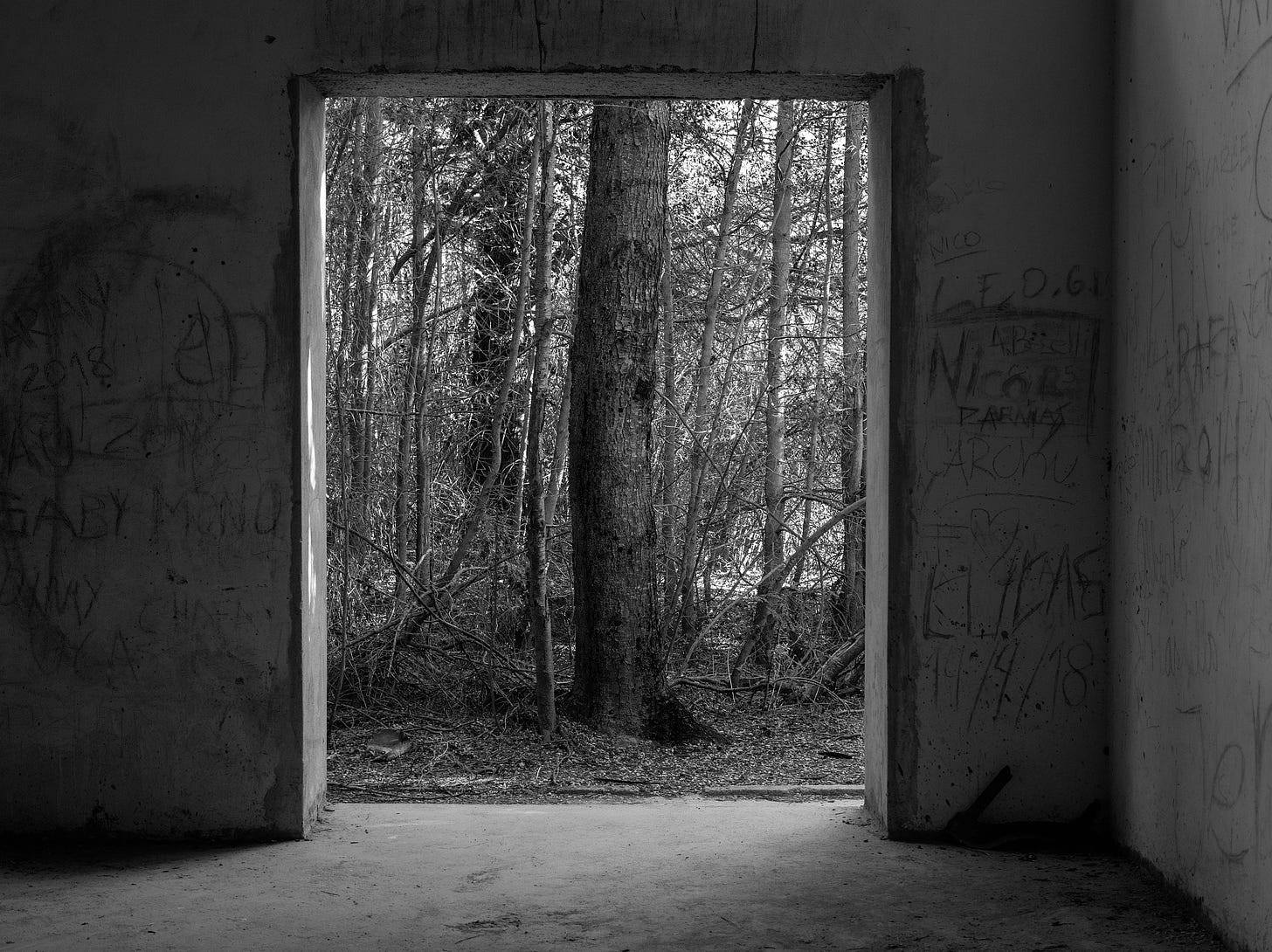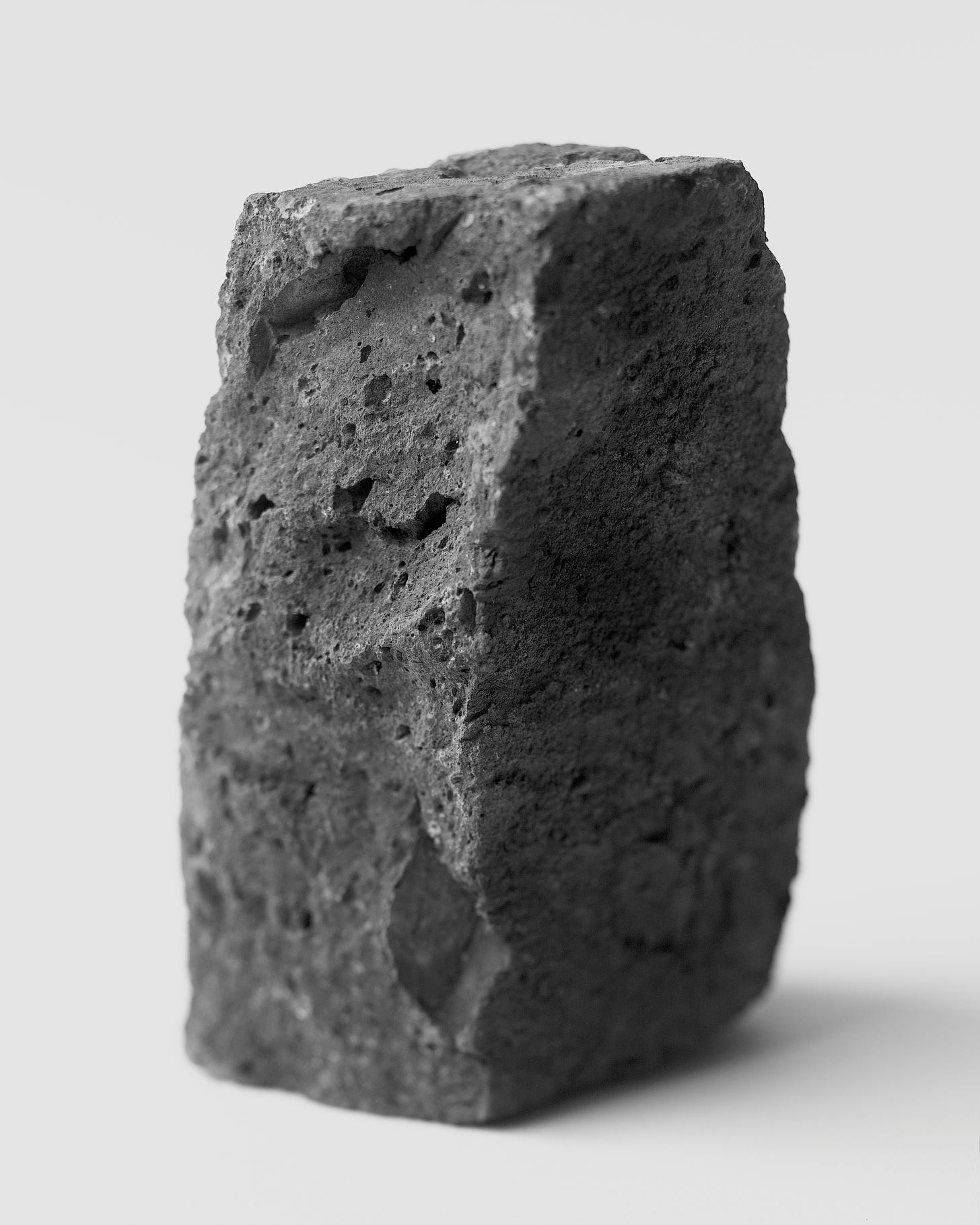The Political Price of Dreams: Pablo Cabado’s "Little Suns on Earth"
Arturo Soto looks at a photo book telling the story of a failed nuclear energy program in post-World War II Argentina.
Ronald Richter was a German physicist hired by the Argentinean government after WWII to research atomic fusion with the prospect of producing cheap energy. This is the short version of the story. A much longer one, with numerous twists and turns, is recounted in Pablo Cabado’s photobook Little Suns on Earth, a title that alludes to the desire to reproduce the process by which the sun generates energy.
I was attracted to this historical episode because I thought Richter had been a Nazi, and I wanted to learn more about the questionable state ethics that had permitted people like him to settle in South America. Richter worked for Nazi-sponsored institutions and was an obstinate anti-communist, but as it turns out, he wasn’t an evil scientist like Josef Mengele or an efficient administrator of doom like Adolf Eichmann, both of whom took refuge in Argentina. Richter’s myriad problems lay elsewhere, and this story is about delusions of grandeur as much as a failed scientific project.
Richter saw the move to Argentina as an opportunity to finally realize the experiments the German elite had prevented him from doing, or so he believed. Conversely, President Juan Domingo Perón thought he was getting a top scientist, a genius even, whose achievements could potentially boost the country’s geopolitical stance. The opportunism went both ways, with Perón’s government snatching whatever they could from Europe’s brain drain and Richter overstating his reputation to get the funding he wanted. Neither party was particularly bothered about the other’s past. Since the Peronist government was not on good terms with the country’s academic community, Richter’s lab was set up far from the capital. In Córdoba, he quickly antagonized his co-workers, accusing them of ineptitude and espionage.
The government agreed to move the project to a secure location in the Nahuel Huapi Lake, about an 18-hour drive from the capital. Building specialized facilities on the uninhabited island of Huemul quickly became an operation of Fitzcarraldoesque proportions that was too expensive for a poor nation. Perón saw the Huemul Project as a risk worth taking since Argentina had struggled to find footing in the increasingly globalized market of the postwar years. Richter’s promised energy would have granted them significant leverage with the conflicting ideological blocs if another war erupted. Perón announced the project with great fanfare in 1951, confident that it would turn Argentina, with a single stroke, into an economic authority and an example of moral good (as they wouldn’t use the technology for military purposes).
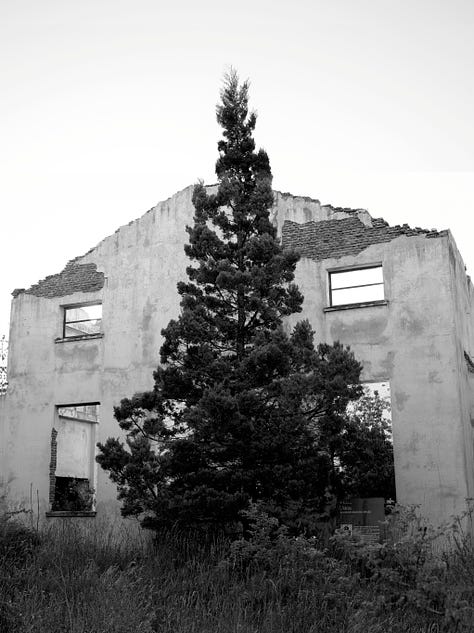
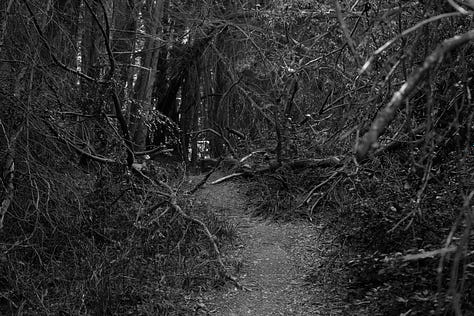
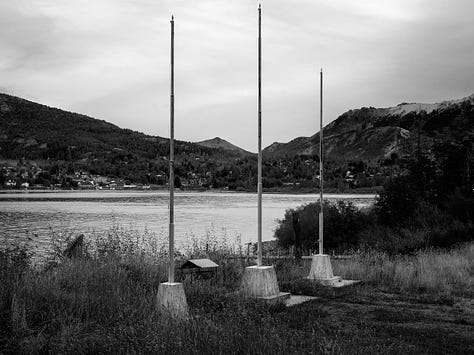
Unfortunately, things on the island didn’t run very smoothly. Richter’s contradictory orders – discarding structures right after they were completed, ordering expensive gear but never using it – quickly damaged his leadership. While his worst trait was overconfidence in theories he couldn’t prove, his ever-present paranoia also sabotaged his research, the last chapter of a long career in which he could never collaborate with other experts. The Huemul project (1949-52) only lasted so long because of Richter’s ability to portray himself as a misunderstood genius on the verge of a transformative discovery but also because no civil servant wanted to assume responsibility for its failure. After a close inspection by fellow scientists threw meager results, the Huemul project quickly became a political liability for a government on the verge of losing the country’s grip.
Little Suns on Earth is divided into two equal parts. Opening the book reveals a dossier on the left-hand side in which historian Diego Castelfranco rigorously recounts this story, illustrated with archival images and studio shots by Cabado of material evidence found on the island (bullets, bricks, fuses, etc.). The book’s main section lies on the right-hand side, with pictures depicting the lake, the island’s flora, and the project’s decaying structures. This arrangement clearly signals Cabado’s intention to not rely solely on images to tell this complex story, capitalizing on the frictions that occur when historical accounts and fine art photographs commingle. As a result, the facts of the text change how we look at seemingly straightforward pictures of foliage or trees, bringing to the fore their role as a different kind of evidence or, perhaps, even as silent witnesses. Cabado’s photographic documentation prompts us to imagine how what lies beneath the surface may constitute what is most significant in an image (a theme he also explored in the series A Rare Stone, in which he photographed the site where dinosaur fossils were discovered in 2008).
Made in various digital and analog formats, Cabado’s images put into perspective the brevity and misfortune of the Huemul project but without reducing them to mere illustrations of the text (which is necessary to appreciate the picture’s intricacies fully). In fact, their best quality is how, aided by their rich tonality, the pictures avoid screaming a specific message at the viewer, creating instead an intense aesthetic experience that suggests how geological time will always have the upper hand. Cabado states that the dynamic established by an extended text in relation to poetic landscape images was inspired by the classic photobook Bravo 20 (1990), Richard Misrach’s documentation of the Great Basin Desert used illegally by the US Navy to test bombs.
Similarly, making Little Suns on Earth allowed Cabado to explore history beyond archives and libraries. The shoots were physically demanding – the lake’s strong current made it challenging to cross into the island – but he became engrossed by Huemul’s energy. It took over twenty trips to the area to gather the material Cabado thought was required to set up Richter’s story in a manner that wasn’t reductive, especially considering the dreadful place the scientist’s reputation occupies in the Argentinian collective unconscious. Cabado’s conversations with historians and physicists granted him enough critical distance from the implicit controversies surrounding the Huemul project to reconsider the story of that other candidate who, like Robert Oppenheimer, also aspired to the title of Modern Prometheus but whose actions and shortcomings helped chisel his name in the pantheon of infamy.
Arturo Soto is a Mexican photographer, writer, and educator. He has published the photobooks In the Heat (2018) and A Certain Logic of Expectations (2021). Arturo holds a Ph.D. in Fine Art from the University of Oxford, an MFA in Photography from the School of Visual Arts in New York, and an MA in Art History from University College London. Arturo lives in Wales, where he is a Lecturer in Photography at Aberystwyth University.
Arturo writes a series of reviews on Latin American photographers for Dispatches: The VII Insider Blog. Check out his other articles:
The Possibilities of the Actual: Adriana Lestido’s "Metropolis"
Pablo Hare: Sites of Exploitation in Peru
Feeling Out the Past: Graciela Iturbide’s “Heliotropo 37”
A Masked Profession: Federico Estol’s “Shine Heroes”
The Persuasions of Disobedience: Ana María Lagos
Messages of Angst and Hope: “Notas De Voz Desde Tijuana”
The Politics of Window Shopping: Pablo López Luz's “Baja Moda”
Life in a Lawless Town: Juan Orrantia’s “A Machete Pelao”
The Disenchanting Hunt for the Truth: Christo Geoghegan’s “Witch Hunt”



